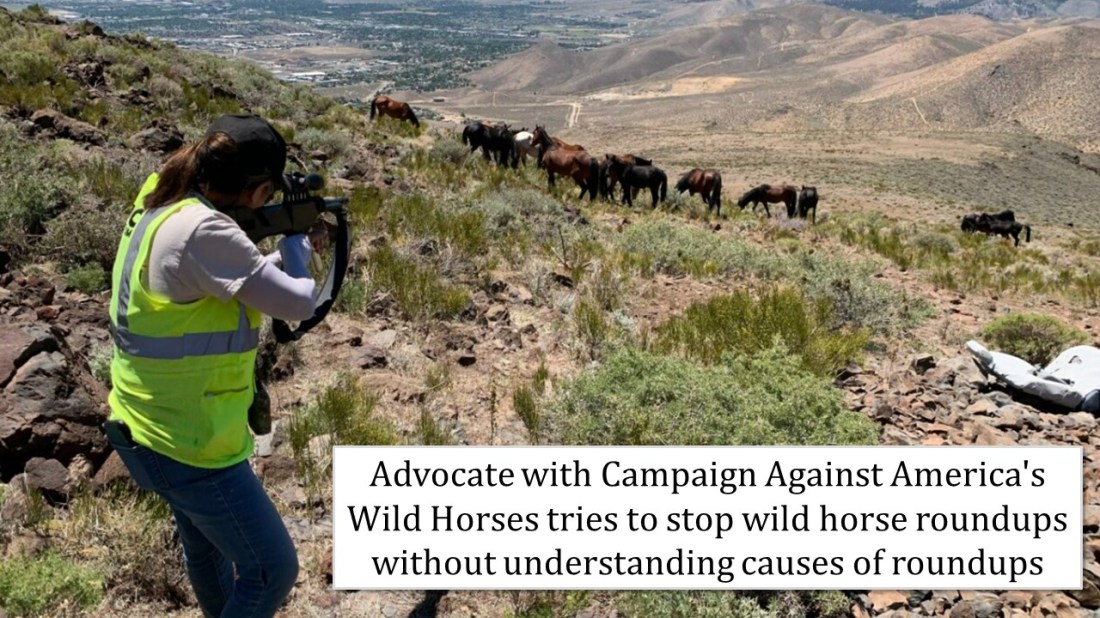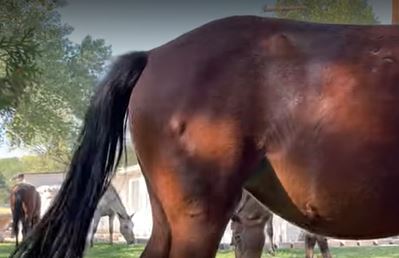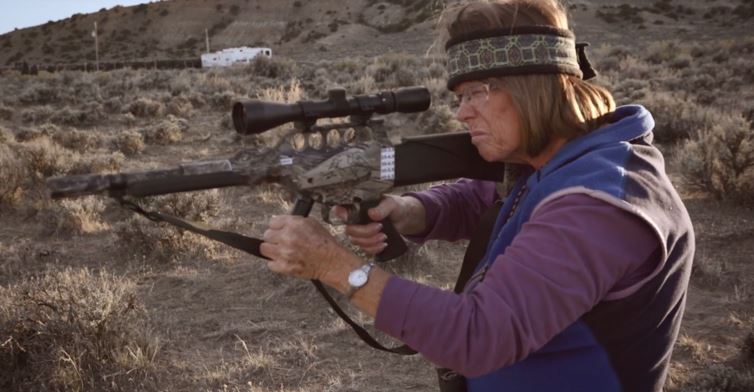Why are you still giving them money?
RELATED: Confusing Cause and Effect at Antelope Complex.

The incident started on July 20. Results through July 30:
No horses were captured on Days 9 through 11, leaving the total at 16.
All have been shipped.
Five burros were caught on Day 9, followed by six on Day 10 and three on Day 11, bringing the total 77.
Sixty-six have been shipped.
No deaths were reported and no animals have been returned to the range.
Youngsters represented 5.2% of the burros gathered.
Of the adults, 47.9% were male and 52.1% were female.
At the end of Day 11, there were eleven unaccounted-for burros.
The location of the trap site was not disclosed.
The capture and removal goals are identical, 25 wild horses and 100 wild burros.
RELATED: Johnnie Roundup, Day 8.
What happens when you argue about symptoms and the best way to treat them?
The illness continues or gets worse.
That’s what you’ll find in an article about the Antelope roundup by The Hill.
Apparently, the writer wasn’t interested in looking upstream in the management process to understand why roundups occur.
An advocate with WHE offered an explanation:
Habitat fragmentation and habitat loss is the main driver of problems for all wildlife, wild horses included.
OK. Why is their habitat shrinking? What’s causing the fragmentation?
Like the author, the advocates and their supporters have no interest or no ability to distinguish between cause and effect.
Their “solutions” don’t cure the disease, they make the patient feel more comfortable.
It’s like adding inspectors at the end of a production line to cull out defective items.
The practice can only prolong the problem because it does not fix the causes.
RELATED: Antelope Roundup North, Day 21, SNAFU Edition.

At the Pryor Mountain WHR with Our Crazy RV Life.
The incident began on July 9. Results through July 29:
The figures above are based on the daily reports, not the totals posted by the BLM.
Data quality is poor. Accuracy went south on Days 16 and 17.
The number of horses captured is 1,025 and the number shipped is 846 according to the figures in the sidebar.
A second helicopter was pressed into service on Day 19, possibly from the Antelope South roundup, now complete.
A stallion was put down on Day 16 because of a hernia.
Another stallion was put down on Day 17 because of blindness in one eye.
A colt was put down on Day 20 due to a physical defect of unspecified type.
A stallion was put down on Day 21 because of blindness in one eye and a filly was dispatched because of a sarcoid tumor, both non-life-threatening conditions. A filly was euthanized for physical defects on both front legs but no details were given.
The death rate is 1.5%.
The capture total includes 395 stallions, 470 mares and 154 foals.
Youngsters represented 15.1% of the animals gathered.
Of the adults, 45.7% were male and 54.3% were female.
A 15% birth rate corresponds to a growth rate of 10% per year, much less than the 20% growth rate used by land managers to predict herd sizes and management actions.
Body condition scores on Days 16 to 21 ranged from 3 to 4.
The location of the trap site was not disclosed.
The HMAs and surrounding lands are subject to permitted grazing.
*According to advocates.
Day 21 ended with 158 unaccounted-for animals.
Other statistics:
Overpopulation means more horses than allowed by plan, not necessarily more horses than the land can support.
RELATED: Antelope Roundup North, Day 15.
The defeatists at Return to Freedom, signatory to the ill-advised “Path Forward,” applauded Senate lawmakers last week for directing the BLM to implement thoughtful management that would slow (not stop) the growth of wild herds, keeping them on their home ranges rather than relying on the costly and traumatic capture, removal and warehousing of wild horses and burros.
This, of course, means pummeling the mares with ovary-killing pesticides. It’s not a question of proper implementation as suggested in the announcement. The stuff is poison and those who promote it are frauds.

The group works with lawmakers on both sides of the aisle to demand the immediate scaling up of safe, proven and humane fertility control for wild horses and burros, according to a news release dated July 29.
Like the Campaign Against America’s Wild Horses, its affiliates, offshoots and supporters, Return to Normal (Before WHB Act) is always eager to beat down wild horse populations so ranchers can access most of their food.
The bureaucrats refer to this as achieving and maintaining AMLs, which are small relative to the available resources.
RELATED: Better if They Weren’t Even Born.
The Beatty Town Advisory Board has drafted a letter to the BLM seeking the removal of some of the burros that inhabit the area, according to a story dated July 28 by the Pahrump Valley Times.
The town lies within the Bullfrog HMA.
A 2019 roundup, not mentioned in the report, took 690 animals off the range, on top of 404 in 2018.
The HMA intersects one allotment.
The Allotment Master Report puts it in the Improve category, with 1,926 active AUMs on 269,764 public acres.
The permittee is the Nature Conservancy of Southern Nevada.
The Authorization Use Report shows the livestock type is cattle, and, with pasture rotation, the grazing season is twelve months per year.
Both reports suggest that grazing in the HMA is not allowed.
The first step in restoring public lands and wildlife in the state is to stop scapegoating wild horses and start addressing the root cause of the problem, which is reining in the excesses of the cattle and sheep industries, according to a column dated July 28 in CounterPunch.
Western Horse Watchers says let the ranchers do whatever they want on their own land.
Confine them to their (multi-million dollar) base properties in a year-round off season and let them pay the going rate to feed their animals.
No more sucking on the sugar teat.
The incident started on July 20. Results through July 27:
No horses were captured on Days 6 through 8, leaving the total at 16.
All have been shipped.
Five burros were taken on Day 6, followed by 11 on Day 8, bringing the total 63.
Forty-seven have been shipped.
No deaths were reported and no animals were returned to the range.
The location of the trap site was not disclosed.
The capture and removal goals are identical, 25 wild horses and 100 wild burros.
RELATED: Johnnie Roundup, Day 5.
The first leg of the journey was on July 26, documented in a video by WTKR News.
The return trip is set for today, minus most of the youngsters.
Perfect topic for Foal-Free Friday.
RELATED: Chincoteague Pony Swim Today.
The project description says overuse by wild horses has resulted in the almost complete loss of riparian vegetation and the compaction of soils at three springs in the northern part of the HMA, but the CX indicates two.
The exclosures will either be steel pipe attached to posts pounded into the ground or steel buck and rail sitting on the surface.
Little Nettles Spring is on the eastern edge of the Eldorado Canyon Allotment and Rose Spring is in the Clifton Allotment.
The National Data Viewer shows the arrangement. Click on image to open in new tab.
The Allotment Master Report shows no grazing authorizations and no active AUMs.
The CX was signed on June 7 but was not published until July 24.
There were no opportunities for public involvement.
The Veterans for Mustangs Act, HR 726, was reintroduced in the House on February 21 and referred to the Subcommittee on Federal Lands.
The bill directs the Department of the Interior, but not the Department of Agriculture, to prioritize the use of on-range fertility controls to manage populations of wild horses and burros.
In particular, the Secretary (of Interior) shall recruit and train of military veterans to apply said controls, including Zonastat-H, an ovary-killing pesticide.
The Pesticide Platoon would include paid graduates from the Billings School of PZP Darting and Public Deception.
The measure does not preclude the use of other products, such as GonaCon Equine.
The bill does not alter but instead reinforces previous amendments to the WHB Act that favored livestock operators: The Secretary shall immediately take steps to remove excess animals and achieve appropriate management levels, which are small relative to the available resources.
It has gone nowhere since introduction, another stupid idea endorsed by the advocates, proving once again that they’re allies of the public-lands ranchers, not wild horses.
RELATED: Foal-Free Friday, the Lies Begin in Billings Edition.
Keep the advocates away, at least 100 yards, beyond the range of their darting rifles.
RELATED: Advocates, Not Climate Change, to Destroy Currituck Herd.
The incident will begin on September 4, according to a story posted yesterday by the Lake County Examiner.
The capture goal is 500 and the current population is thought to be 1,339 wild horses in and around the WHT.
The AML is 402.
Your host was unable to find a news release at the Modoc National Forest home page.
Modoc staff remain committed to managing wild free-roaming horses in a manner that achieves and maintains a thriving ecological balance and multiple-use relationship on public lands, meaning that ranchers can access most of the food and water in the lawful homes of wild horses.
Operations will be carried out by Cattoor Livestock Roundup and limited opportunities for public observation will be available.
The destination of captured animals was not given and a link to the daily reports was not provided.
RELATED: Fifth Annual Devil’s Garden Roundup Starts Next Month.

The incident concluded today with 1,107 horses captured, 1,095 shipped, two escaped and ten dead.
There were no unaccounted-for animals.
The death rate was 0.9%.
The capture total included 368 stallions, 507 mares and 232 foals.
Youngsters represented 21% of the animals gathered.
Of the adults, 42% were male and 58% were female.
Two HMAs were affected.
The BLM news release said removal of excess horses protects habitat for other wildlife such as sage grouse, pronghorn antelope and mule deer, but the top priority is to protect the gravy train known as public-lands ranching.
RELATED: Antelope Roundups Announced.
The incident began on July 9. Results through July 25:
The figures above are based on the daily reports, not the totals posted by the BLM.
Helicopters did not fly on Day 16 due to equipment maintenance.
A stallion was put down on Day 17 due to a missing eye, a non-life-threatening condition.
The death rate is 0.9%.
The capture total includes 368 stallions, 507 mares and 232 foals.
Youngsters represented 21.0% of the animals gathered.
Of the adults, 42.1% were male and 57.9% were female, outside the expected range of variation from a simple random process centered at 50% males / 50% females with a sample of 875 adults.

A 21% birth rate corresponds to a growth rate of 16% per year, a bit less than the 20% growth rate used by land managers to predict herd sizes and management actions.
Body condition scores were not provided.
The location of the trap site was not disclosed.
The HMAs and surrounding lands are subject to permitted grazing.
*According to advocates.
Day 17 ended with 38 unaccounted-for animals.
The capture goal is 100% achieved. Operations will likely conclude this week.
Mares treated with fertility control pesticides will be returned to the area at a later date.
Other statistics:
Overpopulation means more horses than allowed by plan, not necessarily more horses than the land can support.
RELATED: Antelope Roundup South, Day 15.
The figures for Days 16 and 17 are identical, but the descriptions of the deaths are different.

Totals based on the daily reports deviate from those in the sidebar.
Post on hold.
The incident will occur between 8:30 and 10:30 AM Eastern time, during slack tide, according to a story dated July 25 by WAVY News.
The herd makes the return trip on Friday, minus most of the foals.
Not only do your enemies want to get rid of you, so do your “friends.”
RELATED: Genuine Advocates Disappearing Faster Than Wild Horses?

The incident started on July 20. Results through July 24:
No horses were captured on Days 4 and 5, leaving the total at 16.
All have been shipped.
Ten burros were taken on Day 4, followed by 17 on Day 5, bringing the total 47.
Twenty-three burros have been shipped.
No deaths were reported and no animals were returned to the range.
The location of the trap site was not disclosed.
The capture and removal goals are identical, 25 wild horses and 100 wild burros.
RELATED: Johnnie Roundup, Day 3.